John Venn & Sons has been in professional practice in London for almost two centuries. We are proud to present some of the professional skills of a previous era – many of which are relevant for the current age.
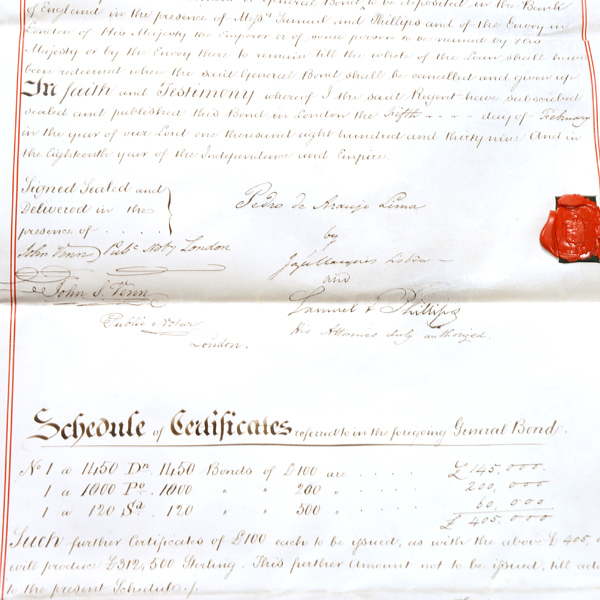
In the 1830s the Brazilian Empire was looking to fund the national debt in London. Bearing stamps from the reign of George IV, this bond dates from 1839. John Venn witnessed the signature of the Brazilian chargé d’affaires, the representative of the Regent of Brazil, “pledging for the strict and due fulfilment thereof His Majesty’s Imperial and Sacred Word”. Pedro II was then 13 years old.
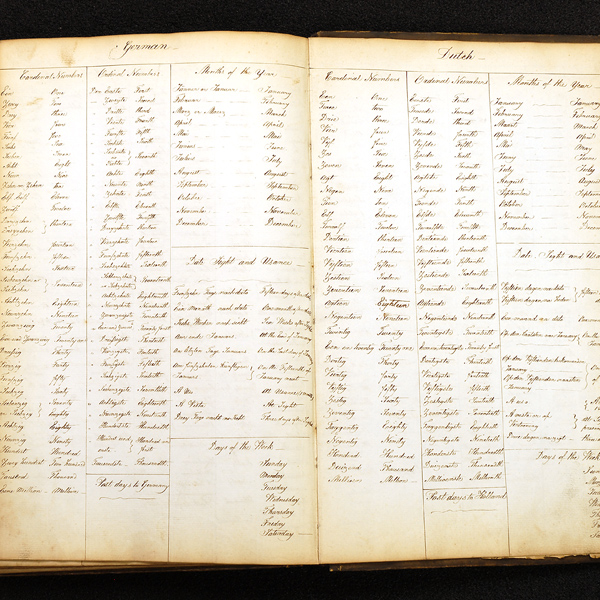
Reference list of cardinal and ordinal numbers in German and Dutch. John Venn’s volume contains vocabulary lists and the addresses of the London diplomatic list, including the representatives from Saxony, Naples and Hanover, and the consular fees payable.
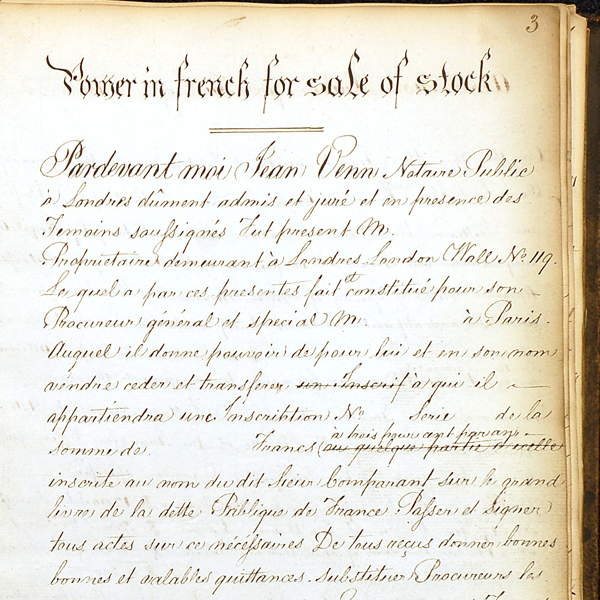
The same volume contains various precedents for use in notarial work: “legality of a merchant’s signature”, “attestation of registrar’s signature”, “protest of a bill of exchange”, “certificate of burial”. The French-language texts show that John Venn would use the French version of his Christian name.
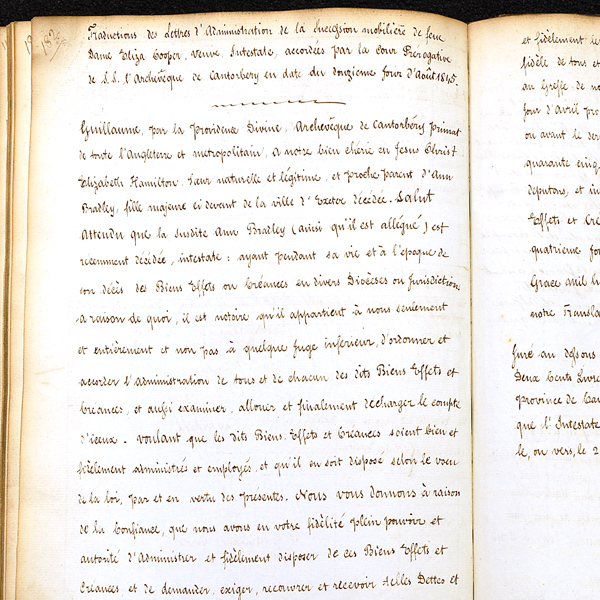
A French translation of an order made in 1845 by the Prerogative Court of the Archbishop of Canterbury. Elizabeth Hamilton had been entrusted with the administration of the estate of her deceased sister “in the confidence we have in your faithfulness”. The archives contain numerous handwritten translations of standard documents used in commercial and inheritance law, with repeated interpolations in the margin, all of which suggest how laborious the task could have been.
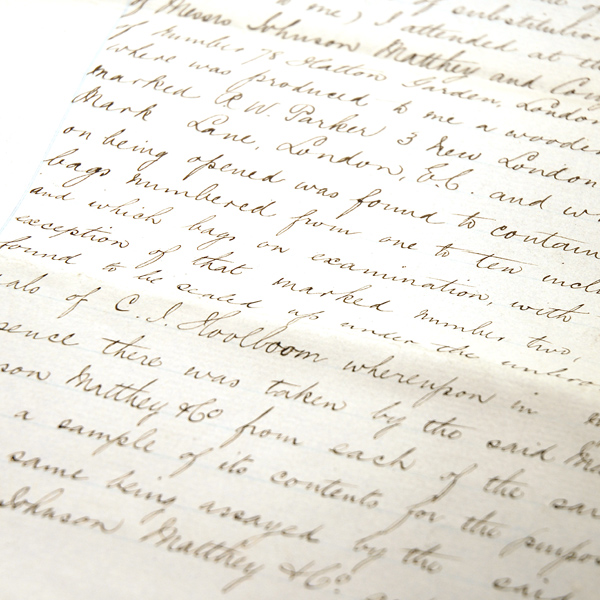
In May 1883, William Webb Venn was instructed to attend by Berlin clients to visit an address in Hatton Garden, London, “where was produced to me a wooden box... which on being opened was found to contain ten bags.” Seals were broken and “in my presence there was taken a sample of its contents for the purpose of the same being assayed”.
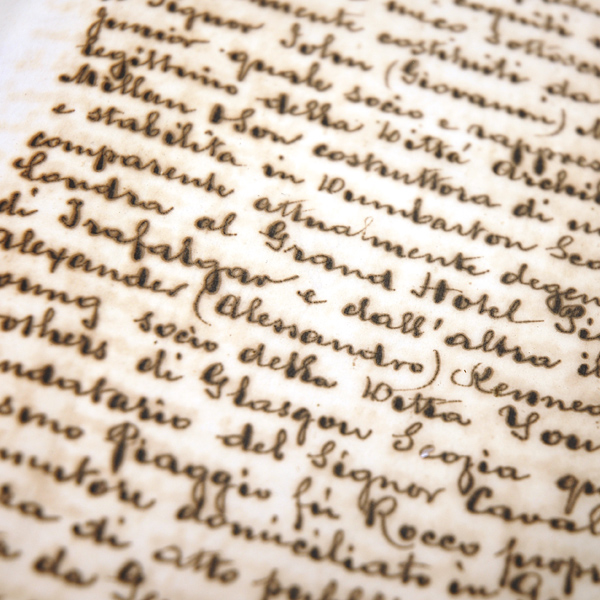
This Italian power of attorney is recorded in a 900-page ledger that was gradually filled between 1880 and 1885 and includes an alphabetical index of clients with page references. This particular client was a Scottish shipbuilder, then staying at the “Grand Hotel, Piazza di Trafalgar”.
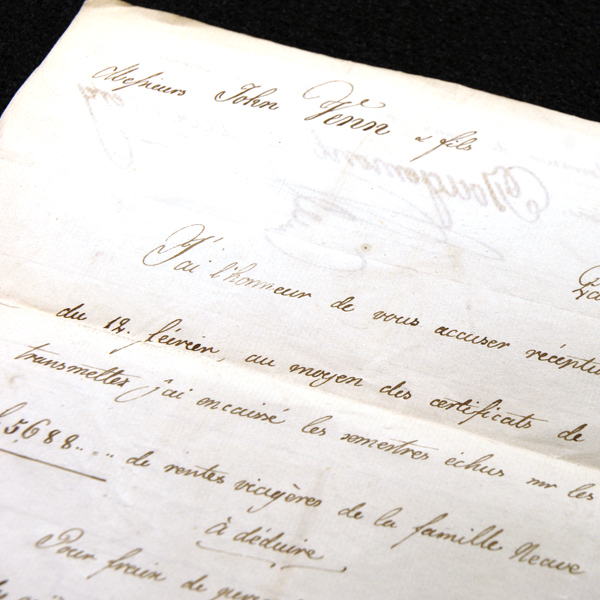
In 1899, Messieurs Rougement and Lowenberg wrote from Paris to “John Venn et fils”, acknowledging receipt of some “certificates of life”. This type of certificate is still used today to ensure that a pension or annuity is paid out to a living beneficiary.
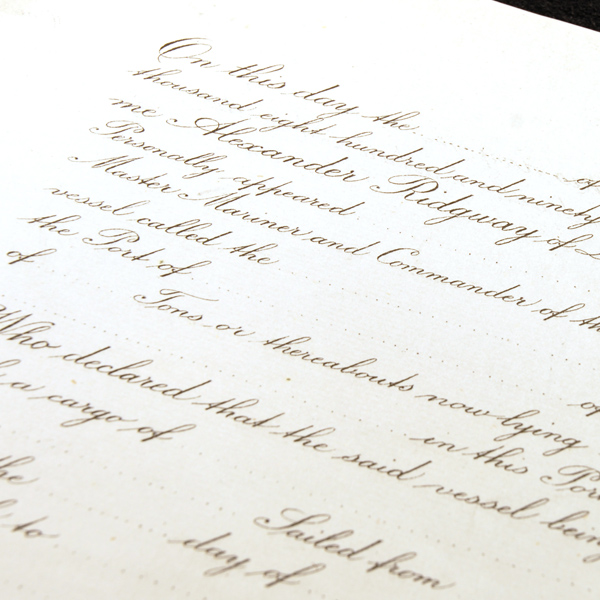
Alexander Ridgway enjoyed enough business from the London shipping industry in the 1890s to order printed forms of ship protest. A ship master could relieve his employer of liability for damage to cargo by showing that the damage was caused by the perils of the ocean rather than the negligence of the crew.
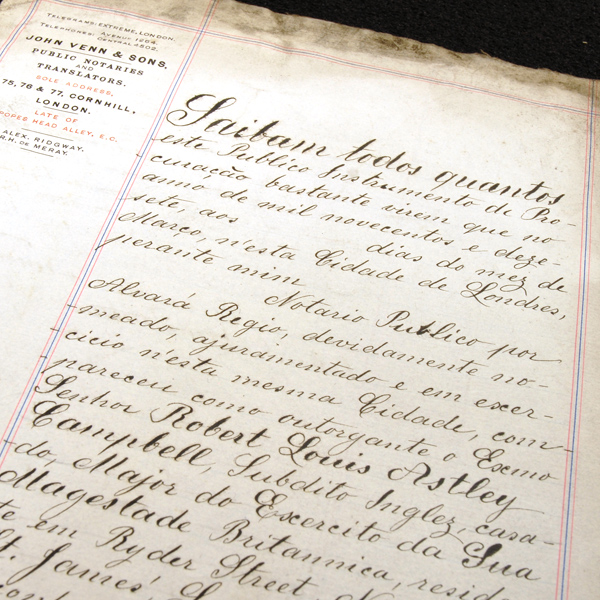
In March 1917 a Major Robert Campbell applied to the Portuguese government for exemption from tithes “for as long as the circumstances arising from the present state of war exist”, he being “unable to enjoy the benefit” of his estates in Portuguese East Africa (Mozambique). This power of attorney was given to the Agencia Colonial Limitada” in Lisbon.
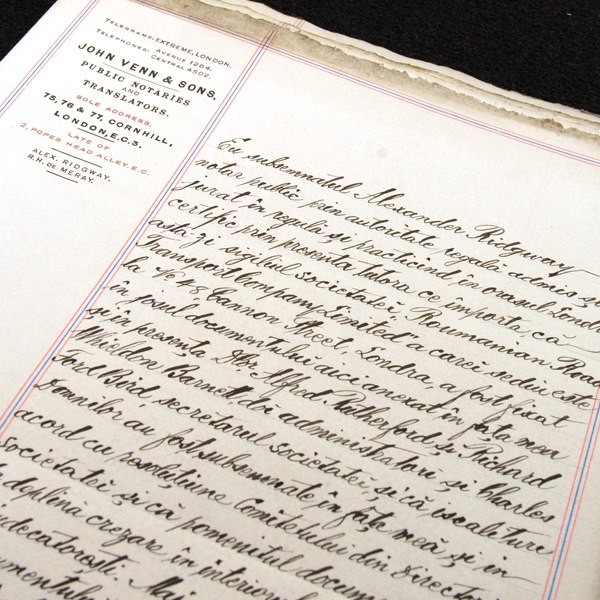
On the last day of 1919, the “Roumanian Road Transport Company Limited” was able to arrange for notarisation of a power of attorney.Telegraphic addresses, such as “Extreme, London”, were intended to be simple.
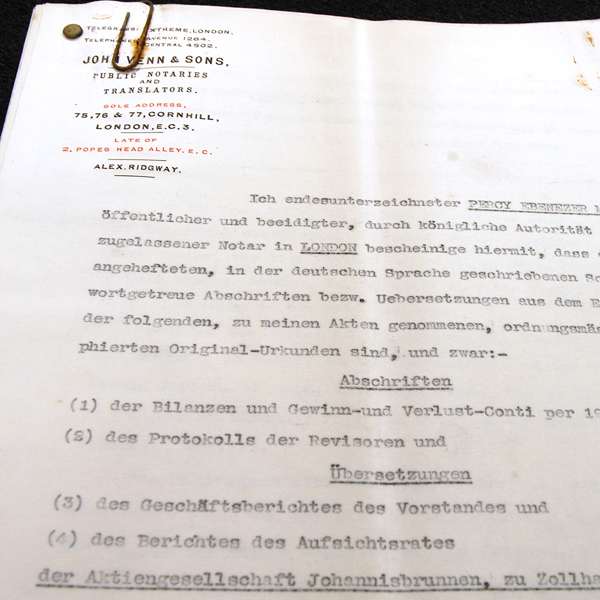
Johannis Brunnen AG held a General Meeting in London in 1922, as is shown in this German-language notarial certificate. There was a good deal of unfinished business, as the accounts for the period 1914-1920 were presented. Percy Mattocks recorded that the meeting had taken place and provided a certified translation of the accounts.
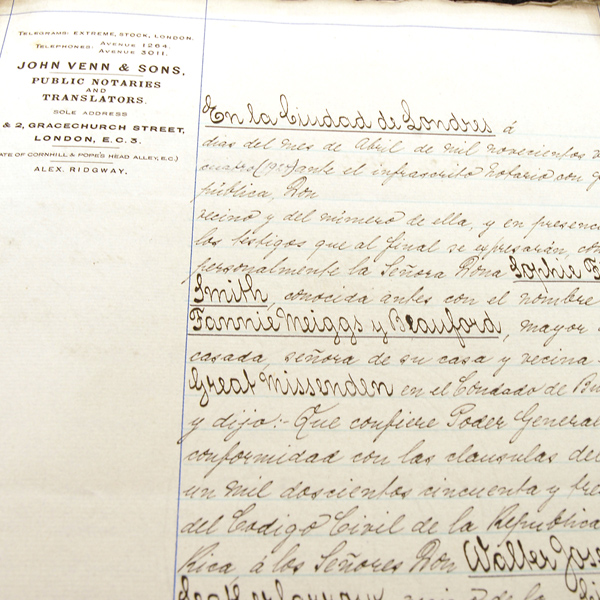
In 1924, Sophie Smith (formerly known as Sophie Meiggs y Beauford) of Great Missenden, signed this Spanish-language general power of attorney for use in Costa Rica.
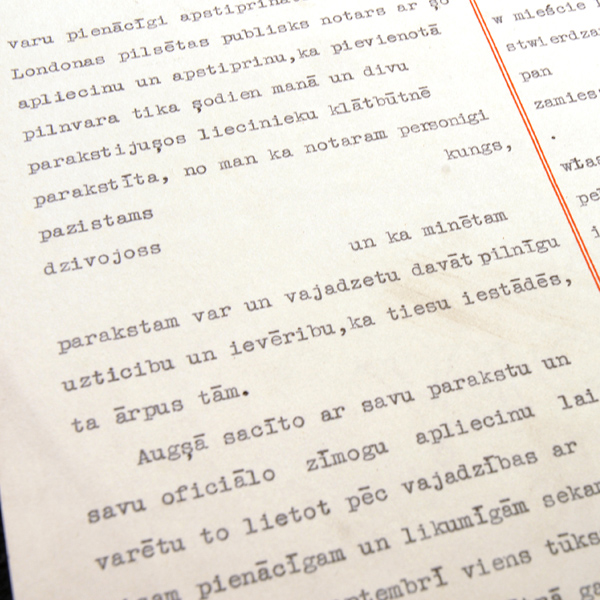
Painstaking effort must have been made by a typist in September 1934 to reproduce the diacritical marks in Latvian and Polish on this template. The letters “l” and “t” have been overtyped to reproduce the Polish letter “ł”. Other Polish-language documents from this period reflect the Europe of the post-Versailles Treaty, with references to “all my property in Poland and the Free City of Danzig.”
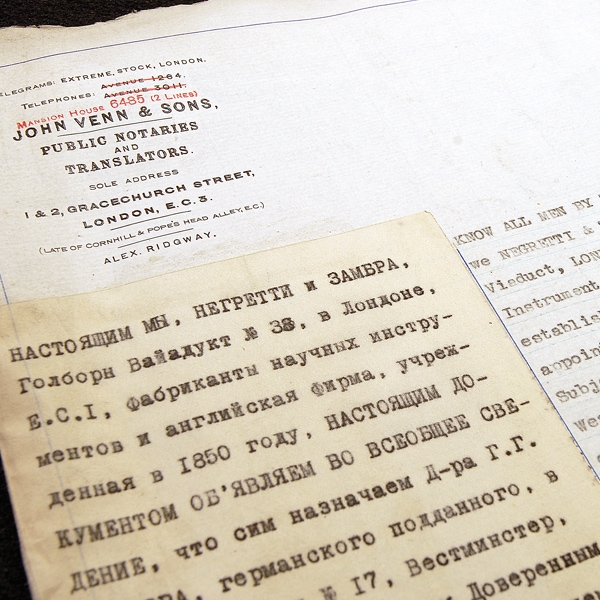
Dual-column documents for the USSR would have been prepared using two different typewriters (for the Cyrillic and Latin alphabets) and the original “cut and paste” method.
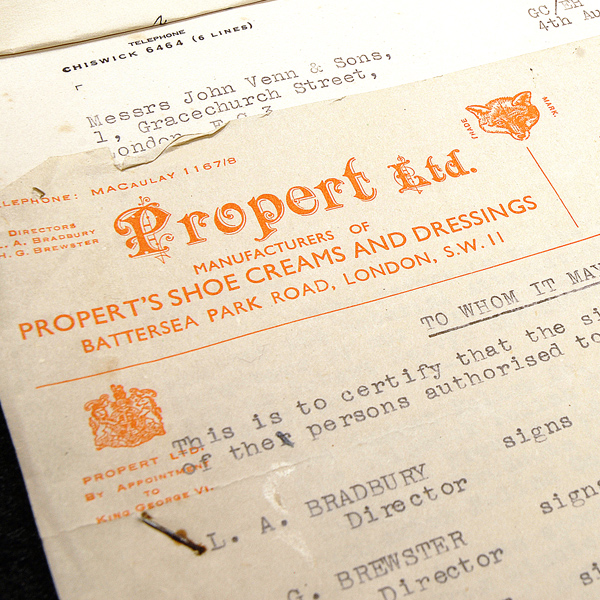
Company names in the archives hint at a previous era of manufacturing and consumer habits, as this letter from 1944 demonstrates.




